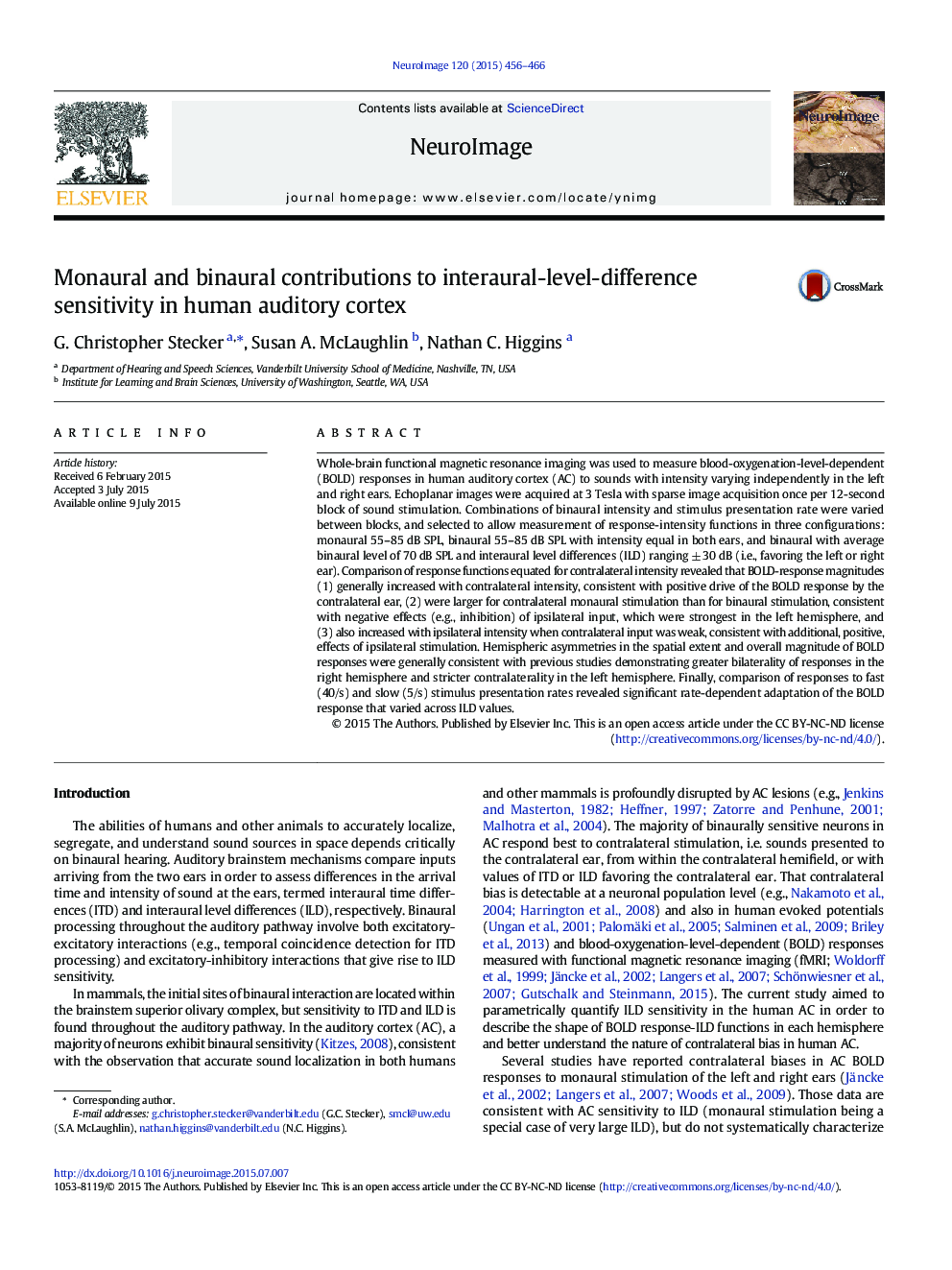| Article ID | Journal | Published Year | Pages | File Type |
|---|---|---|---|---|
| 6024525 | NeuroImage | 2015 | 11 Pages |
â¢BOLD responses in human auditory cortex (AC) are tuned to interaural level differences (ILD).â¢Graded preference for contralateral ILD reflects ipsilateral inhibition of binaural responses.â¢Hemispheric asymmetry supports greater contralaterality in left than right AC.â¢Rate-dependent adaptation of AC BOLD responses varied with ILD.â¢Data support opponent-channel representation of ILD within each AC hemisphere.
Whole-brain functional magnetic resonance imaging was used to measure blood-oxygenation-level-dependent (BOLD) responses in human auditory cortex (AC) to sounds with intensity varying independently in the left and right ears. Echoplanar images were acquired at 3 Tesla with sparse image acquisition once per 12-second block of sound stimulation. Combinations of binaural intensity and stimulus presentation rate were varied between blocks, and selected to allow measurement of response-intensity functions in three configurations: monaural 55-85 dB SPL, binaural 55-85 dB SPL with intensity equal in both ears, and binaural with average binaural level of 70 dB SPL and interaural level differences (ILD) ranging ± 30 dB (i.e., favoring the left or right ear). Comparison of response functions equated for contralateral intensity revealed that BOLD-response magnitudes (1) generally increased with contralateral intensity, consistent with positive drive of the BOLD response by the contralateral ear, (2) were larger for contralateral monaural stimulation than for binaural stimulation, consistent with negative effects (e.g., inhibition) of ipsilateral input, which were strongest in the left hemisphere, and (3) also increased with ipsilateral intensity when contralateral input was weak, consistent with additional, positive, effects of ipsilateral stimulation. Hemispheric asymmetries in the spatial extent and overall magnitude of BOLD responses were generally consistent with previous studies demonstrating greater bilaterality of responses in the right hemisphere and stricter contralaterality in the left hemisphere. Finally, comparison of responses to fast (40/s) and slow (5/s) stimulus presentation rates revealed significant rate-dependent adaptation of the BOLD response that varied across ILD values.
Graphical abstractDownload high-res image (220KB)Download full-size image
